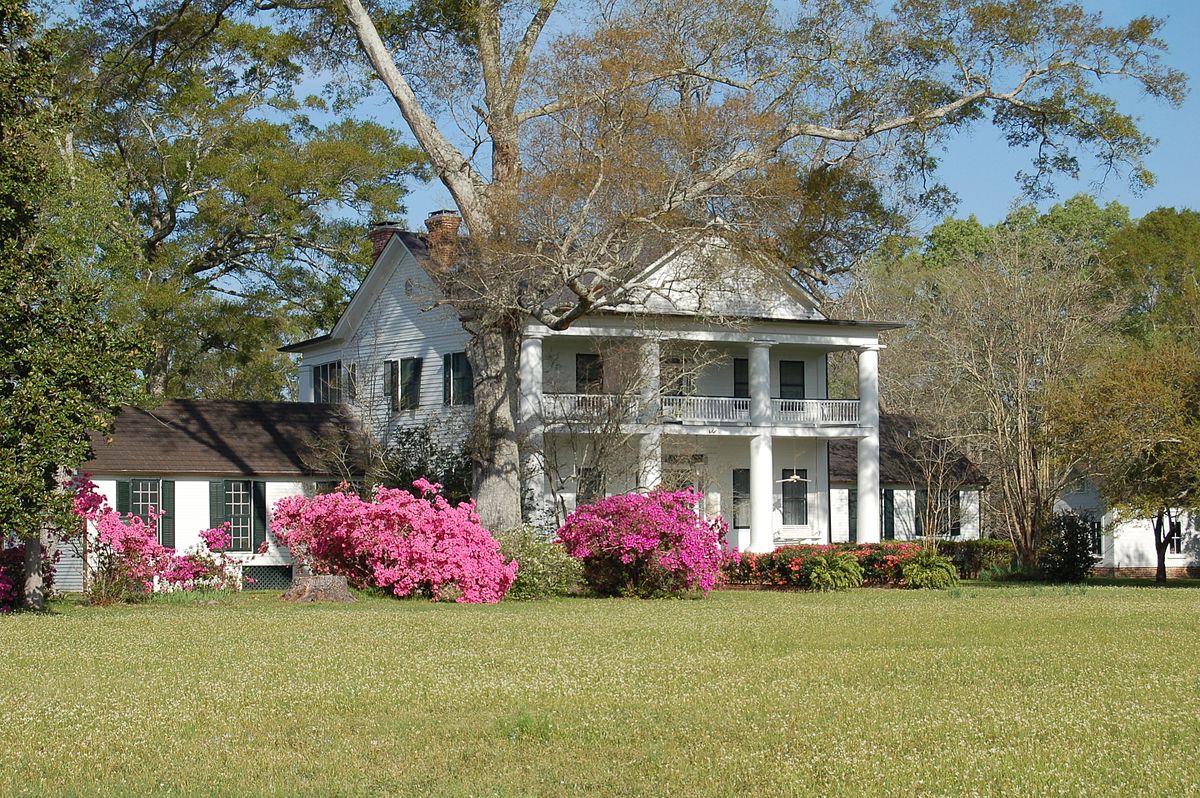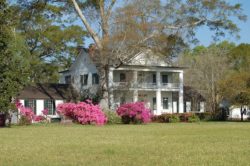Linwood Plantation
Albert G. Carter built Linwood Plantation in Louisiana from an inherited Spanish land grant.

Photo by Wikimedia Commons user Z28scrambler
Linwood Plantation in 2016.
Planter and politician Albert G. Carter built Linwood around 1848 south of Jackson, Louisiana, on the Spanish land grant he inherited from his family. A gallery with four colossal Tuscan columns of stuccoed brick monumentalizes the two-story frame house. The present gable roof was added in 1905; in the center of the façade the gable is framed to resemble a pediment, which heightens the classical appearance of the structure. The central hall extends halfway through the house to meet a ballroom that stretches across the rear. In 1860 Carter owned ninety-five slaves, and the plantation included nineteen slave dwellings, none of which survive. Sarah Morgan Dawson recorded life at Linwood during the Civil War in A Confederate Girl’s Diary after finding refuge there from September 1862 to April 1863. She and her family had fled Baton Rouge when their house was sacked by the Union army. In her diary, Dawson describes in some detail sugarcane processing on the plantation, whose sugarhouse no longer exists. When the Union army bombarded Port Hudson, only three miles from Linwood, Dawson and her family were forced to seek safety elsewhere. The sugarhouse was subsequently used by the Union army as a hospital.
Adapted from Karen Kingsley’s Buildings of Louisiana, part of the Buildings of the United States series commissioned by the Society of Architectural Historians (www.sah.org) and published by Oxford University Press.
